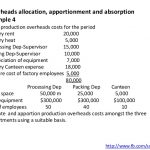Content

By miracle, it turns out the company ended up being rewarded a portion of their outstanding receivable balance they’d written off as part of the bankruptcy proceedings. Of the $50,000 balance that was written off, the company is notified that they will receive $35,000. Reasons for accounts uncollectible relate to bankruptcy or a refusal to pay by the debtor. Accounts uncollectible are receivables, loans, or other debts that have virtually no chance of being paid. An account may become uncollectible for many reasons, including the debtor’s bankruptcy, an inability to find the debtor, fraud on the part of the debtor, or lack of proper documentation to prove that debt exists. Get instant access to video lessons taught by experienced investment bankers.
- When it is confirmed that the company will not receive payment, this will be reflected in the income statement with the amount not collected as bad debt expense.
- By establishing two T-accounts, a company such as Dell can manage a total of $4.843 billion in accounts receivables while setting up a separate allowance balance of $112 million.
- The direct write-off method involves writing off a bad debt expense directly against the corresponding receivable account.
- To illustrate, assume that a company makes sales on account to one hundred different customers late in Year One for $1,000 each.
- However, the actual payment behavior of customers may differ substantially from the estimate.
Once we had a client with about $50,000 in pledges receivables on the books. We kept asking the executive director if she thought the pledges were good because they had not received a payment on most of them for a long time. The write-off of a bad account usually refers to eliminating an account receivable due to the customer’s inability to pay the amount owed. The customer who filed for bankruptcy on August 3 manages to pay the company back the amount owed on September 10. The company would then reinstate the account that was initially written off on August 3.
Direct Write-Off Method
The percentage of credit sales method is an income statement approach and estimates the required bad debt expense for an accounting period using a percentage of the credit sales made during the same period. At the end of each accounting period, we need to record the expected losses due to uncollectible accounts into the allowance for doubtful accounts on the balance sheet. At the same time, we need to recognize it as an expense during the accounting period by recording the same amount of the expected losses into the bad debt expense on the income statement. This amount is referred to as the net realizable value of the accounts receivable – the amount that is likely to be turned into cash.

Unfortunately for various reasons, some accounts receivable will remain unpaid and will need to be provided for in the accounting records of the business. The inherent uncertainty as to the amount of cash that will actually be received affects the physical recording process. To illustrate, assume that a company makes sales on account to one hundred different customers late in Year One for $1,000 each. The earning process is substantially complete at the time of sale and the amount of cash to be received can be reasonably estimated. According to the revenue realization principle found within accrual accounting, the company should immediately recognize the $100,000 revenue generated by these transactions2.
Allowance for Doubtful Accounts: Balance Sheet Accounting
Note that if a company believes it may recover a portion of a balance, it can write off a portion of the account. Companies can also use specific identification, historical evidence, and or risk assignment to determine the estimate. Bad debt recovery is a payment received for a debt that had been written off and considered uncollectible. Goods sold on credit usually have a 30 to 90 day time period in which to be made whole.

Uncollectible accounts refer to those receivables that a business or company is unable to collect from the customer. Before reporting an account receivable in the books, a business must have a reasonable basis for assuming that it can collect the outstanding obligation. Hence, for an account to become uncollectible, there must be a shift in the underlying circumstances of the customer such as bankruptcy, failure to pay when the amount is due, or a souring of the customer-vendor relationship.
Example of Writing off an Account
The allowance reserve is set in the period in which the revenue was “earned,” but the estimation occurs before the actual transactions and customers can be identified. Credit sales all come with some degree of risk that the customer might not hold up their end of the transaction (i.e. when cash payments left unmet). Consider a roofing business that agrees to replace a customer’s roof for $10,000 on credit. The project is journal entry for uncollectible accounts completed; however, during the time between the start of the project and its completion, the customer fails to fulfill their financial obligation. But, when compared to industry trends and prior years, they will reveal important signals about how well receivables are being managed. In addition, the calculations may provide an “early warning” sign of potential problems in receivables management and rising bad debt risks.
- Let’s say that on April 8, it was determined that Customer Robert Craft’s account was uncollectible in the amount of $5,000.
- The various methods can be classified as either being an income statement approach or a balance sheet approach.
- Fundamentally, like all accounting principles, bad debt expense allows companies to accurately and completely report their financial position.
- The entire amount is written off as bad debt expense on the income statement and the allowance for doubtful accounts is also reduced by $1 million.
- For such a reason, it is only permitted when writing off immaterial amounts.
- This report usually shows all the customers’ accounts as its main role is to help us manage the accounts receivable in the business.
Normally, a higher rate is used for accounts that are older because they are considered more likely to become uncollectible. Analysts carefully monitor the days outstanding numbers for signs of weakening business conditions. One of the first signs of a business downturn is a delay in the payment cycle. These delays tend to have ripple effects; if a company has trouble collecting its receivables, it won’t be long before it may have trouble paying its own obligations. Learn accounting fundamentals and how to read financial statements with CFI’s free online accounting classes.
The general ledger figure is used whenever financial statements are to be produced. The subsidiary ledger allows the company to access individual account balances so that appropriate action can be taken if specific receivables grow too large or become overdue. The bad debt expense required is recorded with the following aging of accounts receivable method journal entry.




